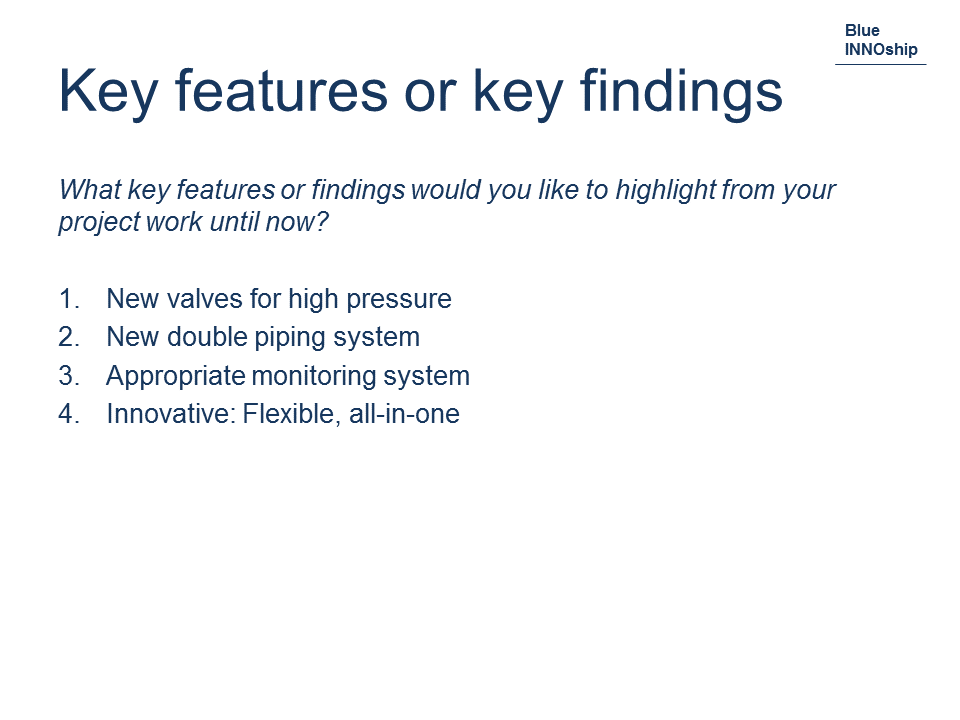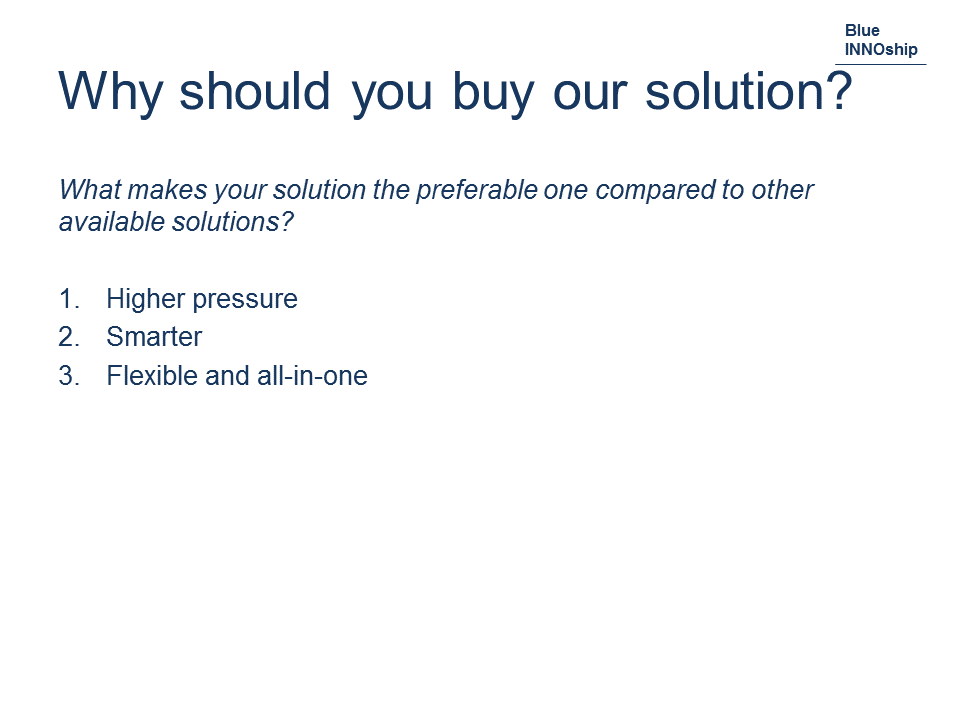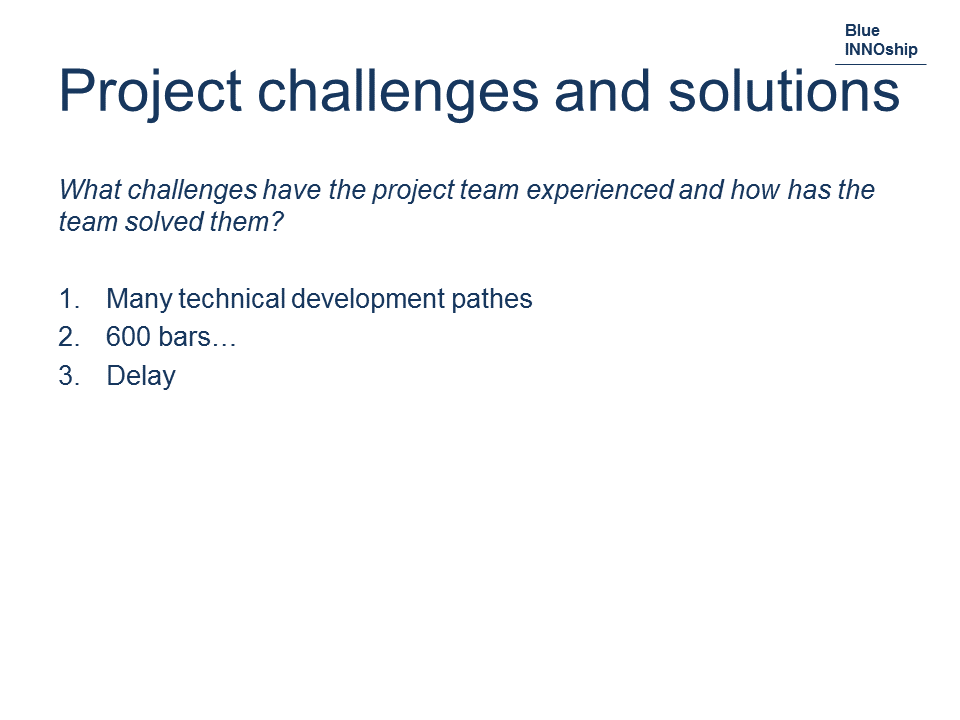|
|
Project #7
| Goals and objectives |
|
The overall goal is to increase the pressure of gas injected to two-stroke engines from 30 MPa to 60 MPa.
A new gas valve train will be developed to enable the use of a higher gas pressure in two-stroke gas engines. The new gas valve train is a complex technology and each part has to be developed for a higher gas pressure and incorporated.
|
| Participants |
|
MAN Diesel & Turbo
Eltronic
Lloyd’s Register
LR-Marine
Dansk Analyse
Aalborg University, Dep. of Chemistry and Bioscience
Aalborg University, Dep. of Energy Technology
The project is supported by Orient's Fund.
|
| Outcome from the project |
  |
| Reporting from the project |
|
How would you describe the results obtained in the project?
The project has resulted in a new gas valve train (GVT) for 60 MPa natural gas fuelled two-stroke engines. The GVT enables the two-stroke engine to combust a larger variety of gasses in order to reduce emissions and improve fuel economy. In general, the project has resulted in a product expected to meet future market requirements.
Among the involved partners, new features, technologies and methods have been implemented:
- New sealing concept - Optimised flow through computational fluid dynamics (CFD) simulations - Modular-based double walled pipe design - Temperature compensation of pipe elongation - New optimised cartridge-based valve design - Surface treatment material with diamond like carbon (DLC) - Optimised online gas composition unit - Optimised mass flow measurement unit - Low maintenance demand - Class approval support of design CFD simulations were performed by AAU Energy on the main valve in the GVT and on the flange joint in the double pipe construction. The CFD simulations were used to optimise both designs with respect to pressure loss. Eltronic has been able to design and produce a high-pressure valve with a reduced level of pressure loss, being 80% reduced. Also a prototype for a standardised double walled piping design has been produced and a patent application has been submitted.
The results obtained by AAU Bio relating to materials have had a direct impact on the development of the final system. Based on this, Eltronic has been able to find suited packing materials for the high-pressure valve and have tested different surface treatments to fit with the chosen packing material. The design of the valve is very compact compared with the high-pressure requirements. The valve was incorporated into the GVT design by Eltronic.
Lloyds Register has issued an Approval in Principal letter covering engineering and electrical/control aspects.
How would you describe the process leading to these results?
Progress was monitored during constructive, well-coordinated project meetings on a regular basis. The process has been good with constructive discussions on the issues to be solved with everyone involved.
Different design concepts were presented and evaluated by the project partners to agree upon the best solution. Eltronic conducted different prototype tests, covering the valve concept, the packing concept and surface treatment of the valve parts, in order to be able to come to the final valve design and GVT design. AAU Bio and AAU Energy have provided knowledge for material selections, material tests and flow simulations, which have supported the design choices made in the project. This process of trial and error has been very educational.
In order to determine what material was appropriate for use in the GVT, both theoretical aspects and experimental investigations were conducted by AAU Bio. This was executed with different types of spring loaded seals, including fibre reinforced and non-reinforced polyetheretherketone (PEEK) polymer seals. It was necessary to investigate alternative packing materials providing the required mechanical properties at low temperatures, while still maintaining the ductility to function as a seal or support. This is typically obtained from expensive polymers such as PEEK or polytetrafluoroethylene (PTFE). The task was to determine if reinforcing commodity polymers could provide the required properties.
Please summarize the key activities conducted in the project
The key activities in the project have been:
- Agreement on principles
- Conceptualisation and design of high-pressure valve
- Design of GVT for design pressure of 60 MPa
- Determination of P&I diagram in collaboration with Lloyds Register
- Prototype tests of valve in low-pressure and high-pressure versions
- Choice of suited packing material for valve
- Tests of seals for the GVT
- Tests of different surface treatments for chosen packing material
- Assembly of the GVT
- Prepare the GVT for Lloyds Register design approval – Approval in Principle
- CFD simulation of the main valve in the GVT
- CFD simulations of the flange joint in the double pipe construction
- Thermodynamic calculations for the gas monitoring system
- Design review towards applicable class society rules
- Investigate the principle of measuring heating value/ flow calculation
- Production and integration of systems
- Test trials and evaluation
- Establish a 60 MPa test facility
- Tests of developed components
- Sparring with partners regarding interaction between engine and Blue INNOship developments
Were there any concerns about the projects outcome during the project and how did you overcome them?
Designing components for a pressure of 60 MPa was an ambitious target and required intensive investigations and search for suitable materials, especially packing materials for the high-pressure valve. However, with support from AAU Bio and trusted sub-suppliers, it was possible to realise an optimal solution.
Which positive findings or news did your project disclose?
Generally, it is possible to design and manufacture a GVT suitable for operation pressures up to 60 MPa. Furthermore, the project has enhanced the partners’ knowledge of designing and choosing materials, when working with high-pressure natural gas installations.
Very few standard flow components are available for 60 MPa applications. As such, the main findings of the project were that it is possible to construct flow components, which are capable of performing at very high pressures in a safe and reliable way.
The equipment has achieved Lloyds Register approval in principle.
Why was the project worth the invested resources?
The developed GVT could be a new product for the partners in the future. The solutions and components are scalable and can be utilised for the present MAN gas engine programme. MAN now has the opportunity to provide an extended gas engine programme with variety of gasses.The marine two-stroke engine market trend shows an increase of gas engines from 2 GW/year in 2018 to 7 GW/year in 2028. MAN estimates that 8 - 12 % of these gas engines will benefit from the higher fuel pressure enabled by this project. The 60 MPa GVT first cost is index 150 compared to the present standard GVT.
The GVT is not limited to marine applications, but has the potential to be used both onshore and offshore.
What key learnings did you obtain through the project?
- AAU Bio has gained a fundamental insight into the low temperature applications of materials. The specifications set by the project provided a very narrow frame for selection of materials and a key learning is that the field of materials applicable at low temperatures is very limited and provides significant obstacles to some solutions.
- The collaboration with AAU has been inspiring and has increased Eltronic engineers’ understanding of packing materials, high strength materials and also the more scientific approach to solving tasks. Eltronic learned the value of making several valve prototypes and testing these in order to reduce the risks of failure to the final version.
- AAU energy has gained insight into the practical operation of valves and the special construction techniques of the double wall pipe design.
- The necessity of smaller prototype tests can be very valuable in a project, especially in this type of project, where very expensive materials and equipment are used.
- Insight into the business aspect of such a project was obtained by the participation in the seminars about product development and business plans.
How was the cooperation between the partners?
The project start-up was “slow ahead”, and it took longer time to define the target than anticipated. Tasks and responsibilities were not clarified from project start-up, leading to some initial confusion in the project.
There was however a close communication and cooperation between partners with open and constructive discussions during the frequent meetings. In general, competent feedback has been obtained between the partners, leading to future proof products and extended corporation beyond this Blue INNOship project.
What could have made the cooperation work better (regardless of the answer of the question above)?
Better alignment of expectations, responsibility and competences between partners should have been clarified before project start and the project could have benefitted from being better defined with much more documentation of the work tasks and required deliverables. For example, it was very difficult to estimate the time required to complete the work tasks.
The project consortium involved many different partners, who made the cooperation more challenging and some partners should have considered, if they were able to accomplish the required innovative contribution. It is always difficult to have different partners from different parts of the country to work together, alongside normal day-to-day activities. The project could have benefitted from conference calls or videoconferencing platforms. The reason would be to make the project more dynamic with all partners providing input and receiving feedback not only from those they are directly involved with, but also those working on different aspects of the overall objective, which may provide new views and insights.
Did any partners not deliver as anticipated? And what did you do about it?
MAN never facilitated the 60 MPa test platform, but maintained the 30 MPa platform available for test purposes. Upgrading the test platform was cancelled because MAN late in the project realised that acceptable engine performance could be achieved with 30 MPa for methane operation and 38 MPa for ethane operation. As a 60 MPa pressure could be required for future ME-GI operation on alternative gasses, the project continued with the original design target of 60 MPa for Blue INNOship developments.
Due to an incident at MAN’s Diesel Research Centre in Copenhagen, a major overhaul of the research engine and facilities was required during Q3, Q4 2017 and Q1 2018. All engine tests were postponed, which means that it has not been possible to proceed with gas commissioning and tests as scheduled.
The double wall pipe gas detection system was not developed as anticipated, i.e. new technologies were never developed and the presented design was based on current equipment. This was accepted between project partners, because it was not essential for completing the overall project targets.
What could have made the project work better?
A closer communication between the partners could have improved the project progress and the partners could have utilised each other’s competences to a higher degree. This did usually not happen without guidance from project management.
Did you have to change scope or process during the process in order to finalize the project?
No.
|
| Presentations, articles and media coverage from the project |
|
|
